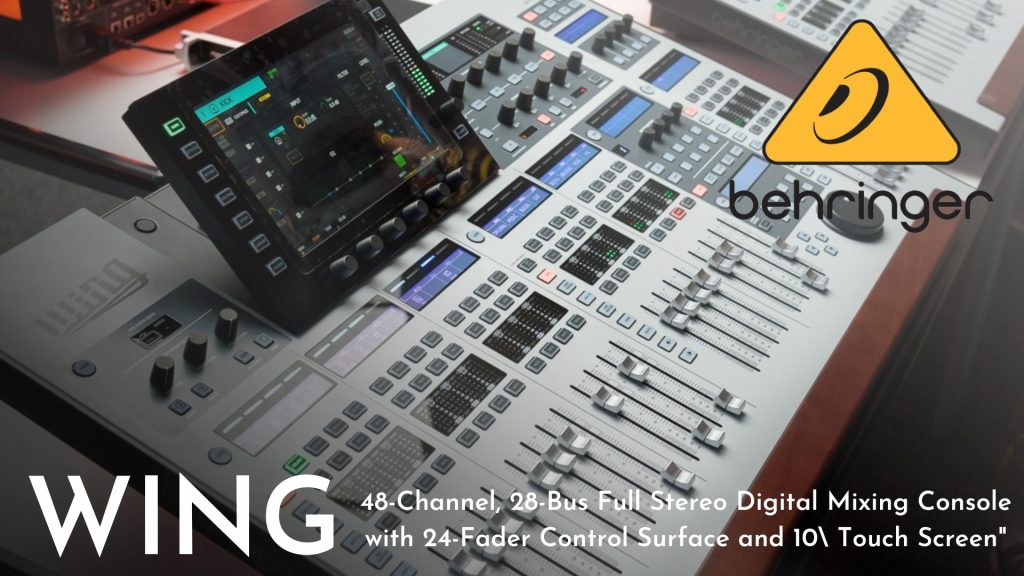Marshall Music Blogs
Behringer WING 48-Channel Digital Mixer
The overall specifications are rather impressive, with 48 channels, four main, eight matrix, and 16 aux stereo buses. But the real story is Behringer’s new approach to mixing sources rather than inputs.
One thing that seems constant in the world of pro audio is the amount of continual change that is happening as equipment manufacturers continue to turn the crank of progress. This time its Behringer’s turn around the innovation block with the release of its latest digital console which they have branded the Wing Personal Mixing Console. Most of us are likely familiar with Behringer’s X32 console which has become a workhorse within the house of worship space. The Wing builds off of that positioning and first impressions would suggest that it will quite likely be more impactful yet. It’s of note, however, that the Wing is not actually replacing the X32. It is a sister console that Behringer intents to use to augment its product lineup. And just to prove the point, at the time of this writing, Behringer was releasing a sizable firmware update for the X32.

The first thing of note related to the Wing is that Behringer appears to have spent a large amount of time considering the unit’s layout and physical interfaces. All information to date points to a very responsive and easy to read swivel display with a sizable touch screen and touch sensitive controls. The touchable interfaces will be a welcome feature for anyone upgrading from the X32. Overall, the console looks fantastically inviting with well laid out controls. There are twenty four motorized channel strips, laid out in three sections of 12, 8, and 4 strips respectively. Each section has its own layering control with custom layer capability for all three. Additionally, there are a number of buttons and encoders that can be customized for your particular workflow. The console also has the ability to support HUI (Human User Interface) and Mackie Control protocols allowing it to act as an external DAW (digital audio workstation) controller. This desk should be happy in your live environment as well as in your production studio.
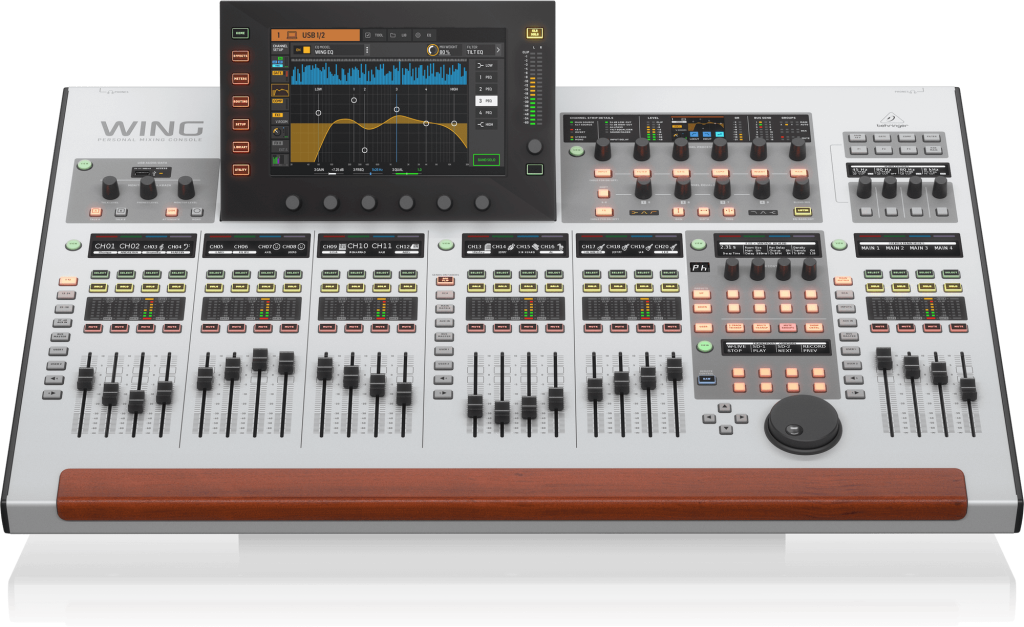
The next major item of note is that Behringer has built this console around the idea of mixing sources rather than inputs. This console separates the concepts of channels and inputs in a way that allows you to think more freely about what you are mixing rather than where it is coming from. Within this paradigm you as the engineer associate your inputs (ie specific mic, line, or digital inputs) with their source, such as guitar, vocal, drum, etc. The configuration of that source (ie name, pre-amp control, configuration such stereo/mono/mid-side) is a property of the source, not of any channel that is used to mix it. If you want to mix a source, you simply assign that source to a channel and the channel then configures itself for that source. If the source is mono, then the channel will be mono. If the source is stereo, then the channel will configure itself to be stereo. This system will even support mid-side type sources and configure itself accordingly. Mid-side support, we might add, is a pretty incredible feature at this price point.
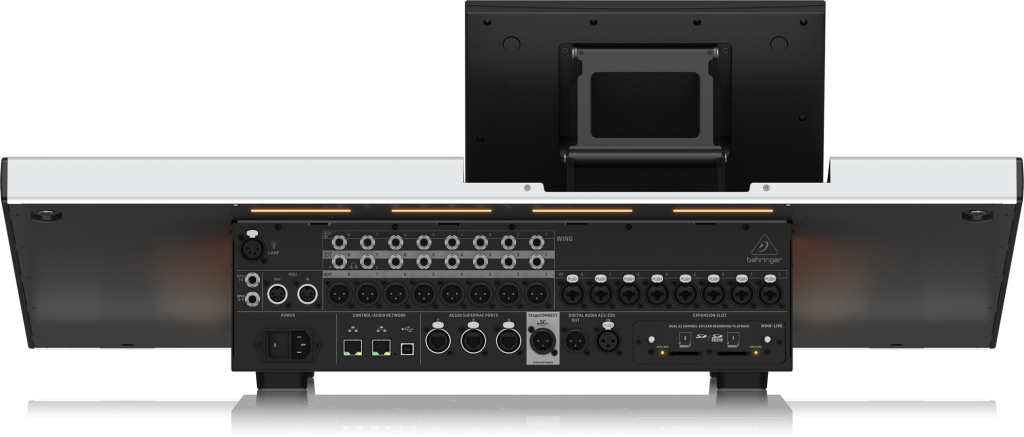
The overall specifications are rather impressive. The Wing supports 48 channels (which represents up to 96 mixed inputs), with 4 main, 8 matrix, and 16 aux stereo buses (28 total). Each bus supports dual inserts, 8 band parametric EQ, full dynamics processing, and a stereo imager. Each input supports high- and low-pass filters, parametric EQ (including a tilt-EQ), gates, comps, as well as two inserts. Additionally, the desk allows for up to 5 plug-ins per channel where those channel processors can be replaced with different flavors of EQs, dynamics, and other processors. As seems to be the trend with other offerings in the industry, the Wing has a number of plug-in emulations that recreate popular hardware processors that have gained notoriety over the years. On top of the plug-in support, the console also offers an 8 slot effects rack that supports up to 8 stereo processors to include further emulations of some of the industry’s most acclaimed effect units (such as those from EMT, Lexicon, and Quantec), guitar amplifiers, and some non-linear goodies.
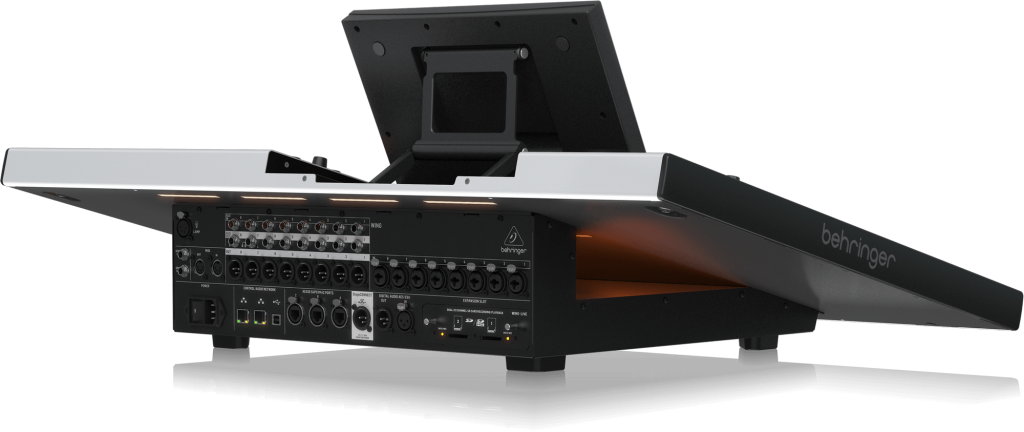
The Wing also supports a tremendous amount of I/O. It has 8 local inputs, supported with Midas Pro mic pre-amps (Midas is one of Behringer’s sister companies) as well as 8 local outputs also supported by Midas Pro output circuitry. Additional connectivity to remote I/O comes through the use of 3 AES connections (supporting a total of up to 144 channels of I/O), an available expansion slot that supports up to 64×64 channels of I/O (via Dante, Waves SoundGrid, MADI, or ADAT protocols), another 48×48 channels of I/O via USB2.0, as well as another 32 channels of connectivity through a low-latency StageConnect connection. The latter is an audio standard recently release by Klark-Teknik that allows for 32 channels of low latency bidirectional audio, over an XLR cable, while also supplying power. Using StageConnect the Wing is capable of routing audio to other system components as well as also supporting Behringer’s personal monitoring system with audio direct from the network. All told Behringer says that the Wing supports a total of 374 inputs and 374 outputs which allows the console to act as both a mixer and a router. All of this processing and I/O management is done at 40-bit resolution operating at sample rates up to 48K.

It should be noted that as delivered Behringer populates the expansion slot with a SD recording card that allows playback/recording of up to 64 channels simultaneously across 2 SD cards. This allows for a number of capture / playback options right out of the box.
The Wing has dual-port ethernet connection with built-in switch allowing it to have redundant network connections for control and management. Remote management of the system is provided by Behringer’s cross platform app that is calls the Wing Co-Pilot.
Our first impression of the Wing Personal Mixing Console is that Behringer intends to help people conceptualize their mix differently and enable the resulting creativity by putting attention grabbing flexibility in a highly obtainable package. This combination should prove highly valuable to pro audio market where we are always looking to improve our tooling without increasing overhead.
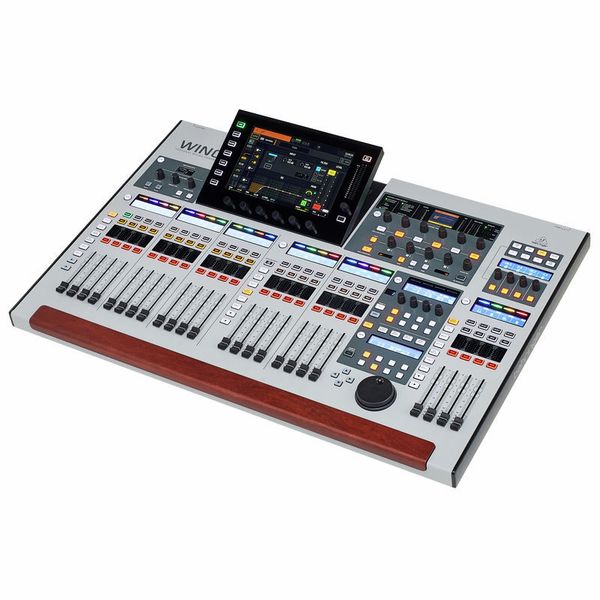
Behringer WING 48-channel Digital Mixer
48-stereo-channel Digital Mixer with 48-in/48-out USB Audio Interface, 24 Motorized Faders, 8 MIDAS Pro Preamps, 28 Stereo Buses, 16 Stereo Digital FX Processors, 64-track Dual-SD Recorder/Player, Ethernet Connectivity, Remote I/O Connectivity, Capacitive Touchscreen, and Expansion Port
